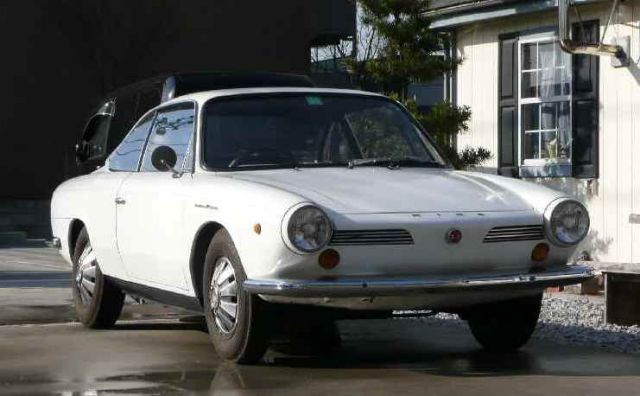Description
The Hino Contessa 1300 Sprint was a striking prototype sports coupé developed in the mid-1960s as an evolution of Hino’s earlier Contessa 900 Sprint concept. It represented the company’s most ambitious attempt to create a true performance car—an elegant, lightweight grand tourer that combined Italian design flair with Japanese engineering discipline. Designed once again by Giovanni Michelotti, the 1300 Sprint demonstrated what Hino might have become had its passenger car program continued beyond its merger with Toyota.
The Contessa 1300 Sprint took the engineering foundation of the production Contessa 1300 Coupé but wrapped it in a far more aerodynamic and dramatic body. Michelotti’s design was low and sculpted, with a long bonnet, steeply raked windscreen, and a fastback tail that hinted at contemporary European GT cars such as the Lancia Fulvia and Alfa Romeo Giulia Sprint. The front featured a wide, purposeful grille flanked by twin headlights recessed under clear covers, while the rear was clean and flowing, emphasizing its rear-engine layout. The entire car sat lower than the standard coupé, giving it a taut, athletic stance.
Inside, the 1300 Sprint had the character of a driver’s car rather than a showpiece. The cockpit was compact and minimalist, with twin bucket seats, a deep-dish steering wheel, and a simple dashboard dominated by a large tachometer and essential auxiliary gauges. Lightweight materials were used throughout to reduce mass, and sound insulation was minimal. The design was pure and functional—Michelotti’s Italian craftsmanship serving the engineering purpose of Hino’s racing division.
Under its rear engine cover, the Contessa 1300 Sprint housed an upgraded version of Hino’s 1,251 cc inline four-cylinder, water-cooled engine. Tuned for higher performance, it featured twin carburetors, higher compression, and a freer-flowing exhaust system. Output was estimated between 75 and 90 horsepower—significantly more than the 55–65 hp of the production Contessa 1300. Combined with a lightweight body of around 750 kg, the Sprint could reach a top speed of roughly 175 km/h (109 mph). Power was sent to the rear wheels through a close-ratio four-speed gearbox, giving the car quick acceleration and lively throttle response.
The chassis, derived from the Contessa 1300 Coupé’s independent suspension system, was tuned for greater rigidity and sharper handling. With its low center of gravity and rear-engine balance, the Sprint offered precise steering and excellent traction, though it demanded skill to drive at the limit. It was conceived not merely as a design exercise but as a genuine competition-capable prototype—intended to represent Hino’s engineering prowess and its growing confidence on the international stage.
The 1300 Sprint made its debut as a concept car around 1966, impressing both Japanese and European observers with its beauty and advanced design. However, Hino’s limited production capacity and its growing collaboration with Toyota meant the project never reached series manufacture. When Toyota acquired Hino in 1967, all passenger-car development ceased, and the Sprint—along with the company’s racing efforts—was quietly shelved.
Only a handful of prototypes are believed to have been built, and few, if any, survive in complete form today. Yet the Hino Contessa 1300 Sprint remains one of the most fascinating “what-if” cars in Japan’s automotive history—a glimpse of an alternative direction where Hino might have stood among the world’s great small-car manufacturers. With its Michelotti styling, rear-engine configuration, and balance of elegance and performance, the Sprint captured the spirit of an era when Japanese carmakers were beginning to blend international design sophistication with domestic engineering ingenuity. It endures as a symbol of Hino’s lost potential and one of the most beautiful forgotten sports coupés of the 1960s.
